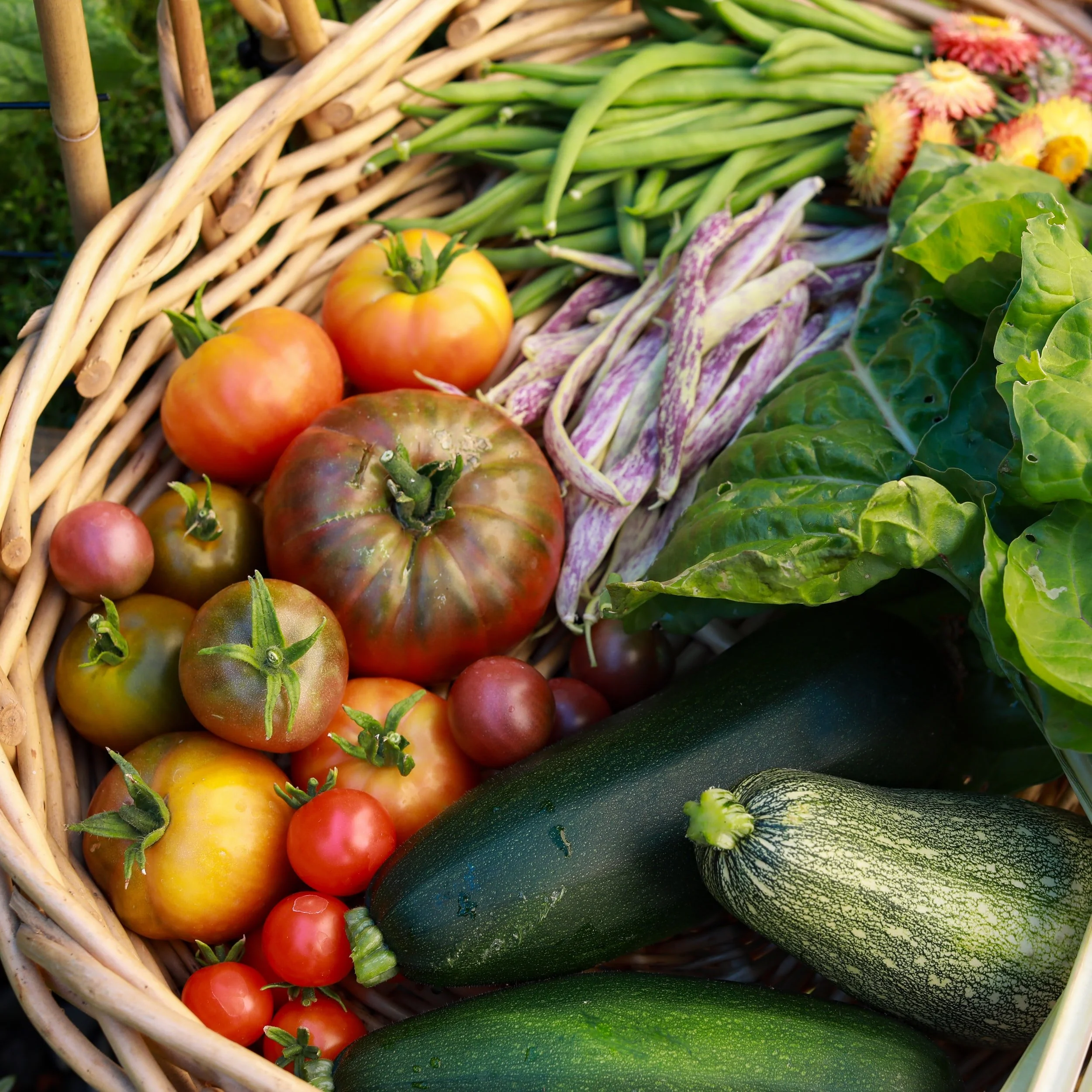Why Shop at the Co-Op?
The Basics and Benefits of Co-Op Shopping


The Basics and Benefits of Co-Op Shopping
For quite a while, shopping at the co-op seemed daunting and intimidating to me. In retrospect, I’m not too sure what I was afraid of: did I think folks shopping nearby would laugh at me if I didn’t record my jar’s tare weight properly? Would everyone know that it was my first time there?
At this point, the answer to both of these questions is a confident “no,” but even so, I avoided it for some time.
Once I acquired the proper items for shopping, (reusable containers, produce bags, etc.) I felt better and was comfortable making a habit out of shopping at the co-op.
It’s like a regular grocery store experience for the most part. There are plenty of packaged items, drinks, eggs, snacks and produce, just like anywhere else. The major difference between a co-op and chain grocery stores is that shopping locally supports your community in several direct and concrete ways. Let’s get into some of the basics.
Benefits to You and Your Community
01 — Nationally, the average food co-op donates 24,100 pounds of healthy, edible food to food pantries annually, with a total of more than 1.5 million pounds of food donated in 2016 alone. In comparison, similarly sized grocery stores divert an average of 12,500 pounds.
02 — Co-op shoppers are generous: in 2016, food co-ops contributed over $2.6 million to charitable causes in their local communities, in both cash and in-kind donations.
03 — As community-owned and operated organizations, co-ops are able to ensure that a higher percentage of revenue is donated than at typical grocery stores, a 44% higher rate on average. Co-ops offer a variety of ways for owners and customers to donate to community organizations, whether by voting on recipients at the annual meeting or by providing customers the option of “rounding-up” purchases to the nearest dollar at the register, earmarked as a donation.
04 — Worker cooperatives, in particular, create quality, empowering jobs for community members.
05 — Owned by consumers, not investors.
06 — “Buying local farm products at your co-op isn’t just good for the agricultural economy in your area: it’s also good for the environment. Locally grown and sold food, which the USDA defines as farm products grown and sold within a 400-mile radius, requires less energy for shipping and storage over its life-cycle.”
07 — While memberships may offer additional discounts, many co-ops allow you to shop without membership commitment.
08 — They often provide quality goods and services to areas that have been shunned by traditional businesses because they are deemed less profitable markets.
09 — They generally invest heavily in local communities. For example, many rural cooperative utilities finance community infrastructure projects, make equity investments in local businesses, grants to neighborhood nonprofits and sponsor a range of community-focused events.
10 — Cooperative memberships builds social networks and strengthen social cohesion, which are essential elements of strong, healthy communities, in connecting diverse community residents.
11 — Purchasing cooperatives, in particular, help small, local businesses remain competitive within markets dominated by large, national retailers.
As far as an exemplary co-op goes, look to Weaver Street Market in Central North Carolina. A cooperative enterprise including 3 grocery stores and a restaurant that together had sales of nearly $30 million in 2012. Weaver Street is owned and governed by its 185 employees and 18,000 consumers.
Demonstrating its commitment to the community, the cooperative sells products from 160 local producers and makes grants to local nonprofits.
What to Bring: Bags and Containers
01 — Bring reusable bags and reusable containers, as co-ops notoriously have great bulk sections.
02 — Take empty containers to the cashier before beginning your shopping to record the tare weights, so you’re only charged the weight of the actual product you get. Many stores have scales near the bulk areas where you can tare your own container, but the most foolproof way is to take it to the front lines, where they often have more accurate scales.
03 — Bottles for personal care products like shampoos, soaps and detergents.
04 — In the age of COVID-19 and that thereafter, this may look a bit different, and co-ops may not allow you to bring containers from home. Perhaps they have containers you can purchase in-store, or you can use recyclable brown paper bags.
Best products to buy in bulk
These items tend to have a long shelf life and are often significantly more affordable when bought in bulk, and you’re able to avoid plastic packaging all-together.
Additionally, buying in bulk allows you to grab just the 2 teaspoons of a niche baking ingredient you need for that random recipe, rather than buying a 1/2 pound bag of it and leaving it to sit in your pantry until you move or throw it away.
Spices
Beans
Nuts
Rice
Flour
Baking Ingredients
Oils and Vinegars
Honey
Nut Butters
Chocolate Chips
Kombucha
Shampoo and Conditioner
Body Wash
Laundry Detergent
Dish Soap
Hand Soap
We hope that this article has demystified the overall co-op experience and encouraged you to take part in supporting your local economy and community.
Disclosure: We may earn a commission at no extra cost to you if you decide to buy any of the products we refer to and promote. All opinions are our own.











